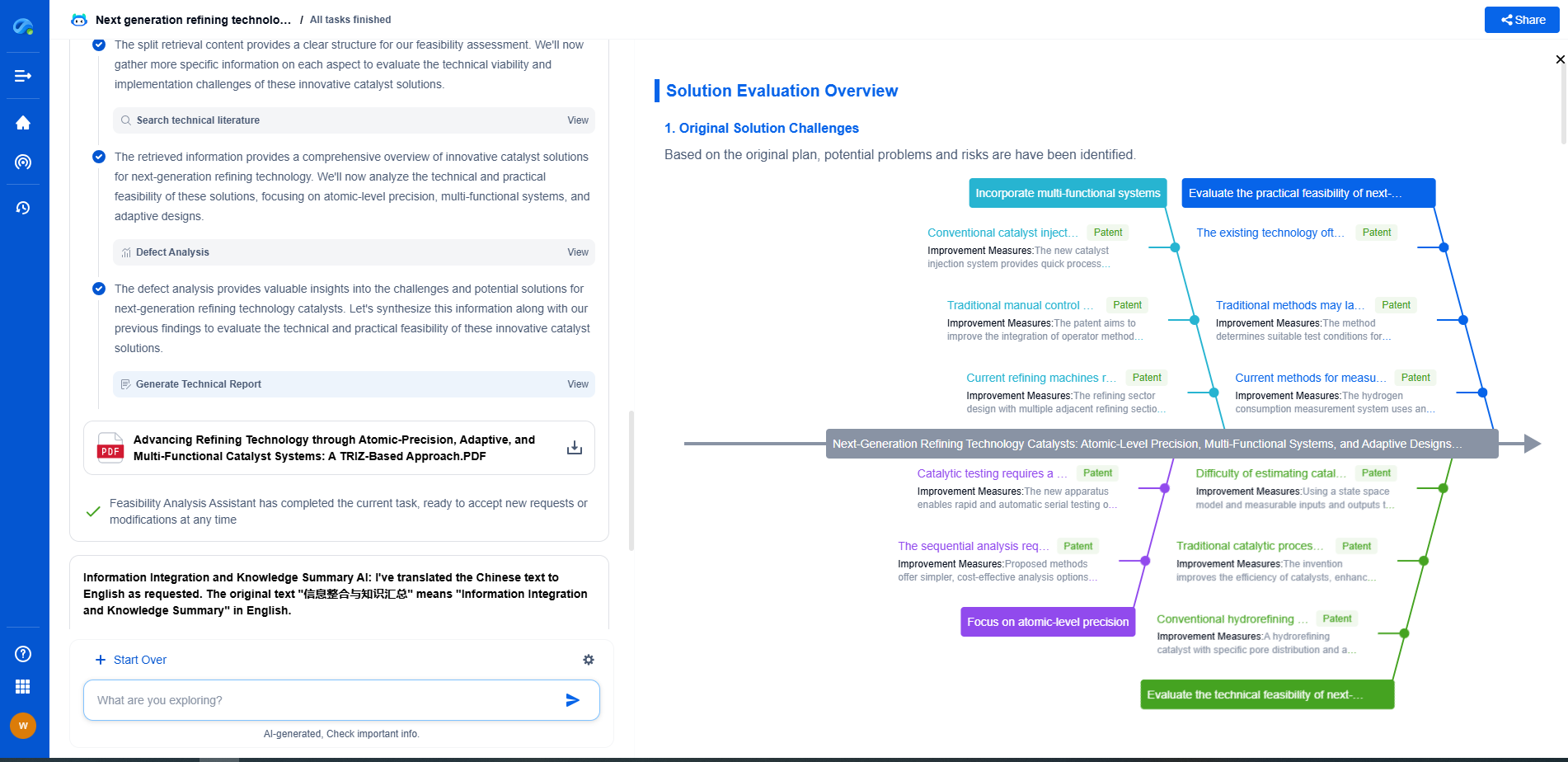Are robots safe for processing explosive materials?
JUN 26, 2025 |
The advancement of robotics technology has significantly reshaped various industries, including the handling of explosive materials. Robots are increasingly employed in environments that are dangerous for humans, offering potential solutions to complex safety challenges. However, with this growing reliance on robotics, questions about their safety and efficacy in such sensitive operations arise. This blog will explore the role of robots in handling explosives, assessing their safety, challenges, and future implications.
The Role of Robots in Handling Explosives
Robots have become invaluable in dealing with explosive materials, particularly in areas such as bomb disposal, manufacturing, mining, and military operations. Their primary advantage lies in their ability to perform tasks in hazardous environments without risking human lives. Equipped with advanced sensors and cameras, robots can safely navigate and manipulate explosive devices or materials with precision. This reduces the chance of accidental detonation and increases operational safety.
Safety Advantages of Using Robots
1. **Enhanced Safety for Humans**: One of the most significant benefits of employing robots is the protection of human lives. By taking on the dangerous tasks associated with handling explosives, robots minimize the risk to personnel, keeping them at a safe distance from potential hazards.
2. **Precision and Consistency**: Robots are capable of performing delicate operations with high precision and consistency. This is crucial when dealing with explosives, as even minor errors can lead to catastrophic outcomes. Robots can execute tasks repeatedly without fatigue, ensuring reliability in operations.
3. **Access to Hazardous Environments**: Robots can operate in environments that are too hazardous for humans, such as areas with high radiation, extreme temperatures, or chemical threats. This capability is vital in industries like mining or during the disposal of unexploded ordnance.
Challenges in Robotics for Explosive Handling
1. **Technical Limitations**: Despite their advantages, robots are not infallible. Technical malfunctions, software glitches, or mechanical failures can occur, potentially leading to accidents. Ensuring the reliability of robotic systems is an ongoing challenge in the industry.
2. **High Development Costs**: The development and deployment of robots for explosive handling can be costly. Advanced technology, research, and skilled personnel are necessary to design and maintain these systems, which may not be financially feasible for all organizations.
3. **Ethical and Legal Concerns**: The use of robots in military applications, especially those involving lethal force, raises ethical and legal questions. The decision-making processes of autonomous robots in life-and-death situations are a subject of intense debate and scrutiny.
Future Implications and Innovations
The future of robots in handling explosives looks promising as technology continues to evolve. Innovations such as artificial intelligence, machine learning, and advanced sensory equipment are enhancing the capabilities of robots, making them more efficient and autonomous. These advancements could lead to wider adoption of robots in various sectors, further improving safety and operational efficiency.
1. **AI and Autonomous Operations**: Integrating AI with robotics will allow for more autonomous operations, reducing the need for human intervention. This could lead to faster and safer handling of explosive materials, with AI systems learning from past experiences to improve future performance.
2. **Improved Human-Robot Collaboration**: Future developments may focus on enhancing collaboration between humans and robots, allowing for better communication and decision-making in complex scenarios. This synergy could optimize operations and further ensure safety.
3. **Regulatory Frameworks and Standards**: As robotic technology advances, establishing comprehensive regulatory frameworks and standards will be crucial. These guidelines will ensure the safe and ethical deployment of robots in hazardous environments, addressing both operational and ethical concerns.
Conclusion
Robots offer a promising solution for safely handling explosive materials, significantly reducing risks to human life. While challenges remain, ongoing innovations and advances in technology are continuously enhancing the safety and efficiency of robotic operations. As industries navigate these developments, continued focus on improving technology, cost-effectiveness, and ethical standards will be key to ensuring that robots remain a safe and reliable option for explosive material processing.
Ready to Redefine Your Robotics R&D Workflow?
Whether you're designing next-generation robotic arms, optimizing manipulator kinematics, or mining patent data for innovation insights, Patsnap Eureka, our cutting-edge AI assistant, is built for R&D and IP professionals in high-tech industries, is built to accelerate every step of your journey.
No more getting buried in thousands of documents or wasting time on repetitive technical analysis. Our AI Agent helps R&D and IP teams in high-tech enterprises save hundreds of hours, reduce risk of oversight, and move from concept to prototype faster than ever before.
👉 Experience how AI can revolutionize your robotics innovation cycle. Explore Patsnap Eureka today and see the difference.
- R&D
- Intellectual Property
- Life Sciences
- Materials
- Tech Scout
- Unparalleled Data Quality
- Higher Quality Content
- 60% Fewer Hallucinations
Browse by: Latest US Patents, China's latest patents, Technical Efficacy Thesaurus, Application Domain, Technology Topic, Popular Technical Reports.
© 2025 PatSnap. All rights reserved.Legal|Privacy policy|Modern Slavery Act Transparency Statement|Sitemap|About US| Contact US: help@patsnap.com

